
30-12-2025 16:44
Pascal DucosBonjour,Une anamorphe rose stipitée, très nombre

30-12-2025 17:14
 Bernard CLESSE
Bernard CLESSE
Bonjour à toutes et tous,Pourriez-vous aider Albe

29-12-2025 10:15
Hulda Caroline HolteHello, I found and collected this propoloid ascom

30-12-2025 09:04
Hello.A Pyrenomycete sprouting sparsely but very d

29-12-2025 17:44
Isabelle CharissouBonjour,J'aimerais savoir si d'autres personnes au

12-11-2021 00:03
Lepista ZacariasHi everybody,A week ago in my fiels trip I noticed

29-12-2025 17:12
 Bernard CLESSE
Bernard CLESSE
Bonjour à toutes et tous,Pourriez-vous m'aider à
anamorph on twig
Ethan Crenson,
12-12-2017 06:24
Yesterday in Queens, New York City I found this anamorph on a twig in Quercus - Liriodendron - Prunus woods. Conidiophores are about .5mm tall, brown, septate. Conidia are knobby globose, light brown 11-16µm. The warts on the conidia are probably .5µm or smaller. Is it possible to know what this is?
Thanks in advance!
Alain GARDIENNET,
12-12-2017 08:15
Re : anamorph on twig
Hi Ethan,
Look at Periconia genus.
Alain
Look at Periconia genus.
Alain
Ethan Crenson,
12-12-2017 16:19
Re : anamorph on twig
Alain,
Thank you! I was able to find a key in Earle, F. S. "A Synopsis of the North American Species of Perconia" in the Bulletin of the New York Botanical Garden, 2: (331) 25 Apr. 1902. If I am to believe that key, then it looks like Perconia epiphylla would fit. Something tells me there may be more to identifying Periconia than is available in that key.
Ethan
Thank you! I was able to find a key in Earle, F. S. "A Synopsis of the North American Species of Perconia" in the Bulletin of the New York Botanical Garden, 2: (331) 25 Apr. 1902. If I am to believe that key, then it looks like Perconia epiphylla would fit. Something tells me there may be more to identifying Periconia than is available in that key.
Ethan
Mateusz Wilk,
13-12-2017 11:28
Re : anamorph on twig
Hi Ethan,
Yeah, there are like almost 180 entries in MycoBank for Periconia...
You could also try books by M.B. Ellis (Dematiaceous Hyphomycetes, More Dematiaceous Hyphomycetes, Microfungi on Land Plants, Microfungi on Miscellaneous Substrates) - somewhere there should be a nice (but certainly outdated, yet not as much as the one from 1902) key to more common species (key adapted from one volume of Mycological Papers I think). From UK, but it still may work.
I have sent you some more info on your e-mail (check also spam).
Cheers,
Mateusz
Yeah, there are like almost 180 entries in MycoBank for Periconia...
You could also try books by M.B. Ellis (Dematiaceous Hyphomycetes, More Dematiaceous Hyphomycetes, Microfungi on Land Plants, Microfungi on Miscellaneous Substrates) - somewhere there should be a nice (but certainly outdated, yet not as much as the one from 1902) key to more common species (key adapted from one volume of Mycological Papers I think). From UK, but it still may work.
I have sent you some more info on your e-mail (check also spam).
Cheers,
Mateusz
Ethan Crenson,
13-12-2017 15:06
Re : anamorph on twig
Mateusz,
Thank you for the documents!
Thank you for the documents!
Chris Yeates,
13-12-2017 19:19

Re : anamorph on twig
Hello Ethan
I think I can see a septum in the head of the conidiophore which would suggest Periconia byssoides, usually found on herbaceous stems but there are records on many tree species.
These septa are often quite tricky to see - you need to lose some of the attached conidia, then adjusting the microscope diaphragm/condenser to provide more light than usual. These septa can be seen (arrowed) in the accompanying 'plate'.
best wishes
Chris
I think I can see a septum in the head of the conidiophore which would suggest Periconia byssoides, usually found on herbaceous stems but there are records on many tree species.
These septa are often quite tricky to see - you need to lose some of the attached conidia, then adjusting the microscope diaphragm/condenser to provide more light than usual. These septa can be seen (arrowed) in the accompanying 'plate'.
best wishes
Chris
Ethan Crenson,
20-12-2017 02:31
Ethan Crenson,
20-12-2017 06:33
Re : anamorph on twig
I have also had a chance to look at Periconia in the material that Mateusz sent to me (thank you again). I am leaning toward Periconia cookei based on the lack of the septum at the head of the conidiophore. Also the size, shape, color and ornamentation of the conidia. (I do not currently have good measurements of base and apex of the conidiophore.) However, Ellis's "Dematiaceous Hyphomycetes" cites a range of "Europe". Could that rule out P. cookei for my collection in Queens, NYC?
Chris Yeates,
20-12-2017 22:35

Re : anamorph on twig
It has been recorded also from (at least) Thailand, Taiwan, Brazil and, closer to you, from Florida: see
Fell, J.W. & Hunter, I.L. 1979. Fungi associated with the
decomposition of the black rush, Juncus roemerianus,
in south Florida. Mycologia 71: 322-342
best wishes
Chris
Fell, J.W. & Hunter, I.L. 1979. Fungi associated with the
decomposition of the black rush, Juncus roemerianus,
in south Florida. Mycologia 71: 322-342
best wishes
Chris



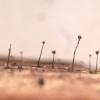
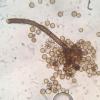
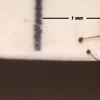
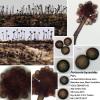
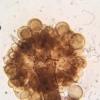
 Mycologia-1979-v71-p322-0001.pdf
Mycologia-1979-v71-p322-0001.pdf